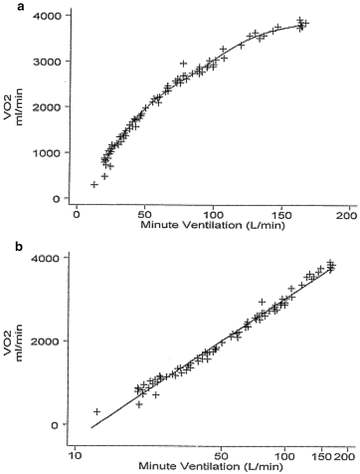
O 2/WR is another parameter which shows us the oxygen cost of performing work and which is the aerobic contribution to exercise. A higher VO 2/HR than predicted indicates better than average cardiorespiratory function, whereas a response with a lower VO 2/HR indicates poorer than average cardiorespiratory function. O 2pulse is a report between O 2 uptake and heart rate (VO2/HR) its values are dependent of stroke volume and its slope is linear. In one report of 223 consecutive patients with heart failure, a VT 18ml/kg/min. It has been suggested that the VT might be more predictive than the peak VO 2 because it is less prone to error. It is defined as the highest VO 2 that can be sustained without developing a lactic acidosis, a response that is generally seen at 60 to 70 percent of VO 2max. The ventilatory threshold (VT), formerly called anaerobic threshold is another index used to estimate exercise capacity ( 3). ❑ĭetermination of the anaerobic threshold by the point where the rate of increase in carbon dioxide output (VCO 2, ml/min) exceeds that of oxygen uptake (VO 2, ml/min). Cardiopulmonary exercise testing (CPET) allows the simultaneous study of the responses of the cardiovascular and ventilatory systems through the measurement and the integrative interpretation of a lot of parameters ( 1). The defect may be in the lungs, heart, peripheral or pulmonary circulation, hemoglobin content and quality, metabolic disorders, psychogenic disorders or the muscles themselves, or there could be combinations of these defects.

Thus, appropriate cardiovascular and respiratory responses are required and the patient's symptoms should be sought for in terms of a gas exchange defect between the cells and environment.

The most important requirement for exercise performance is transport of oxygen to support the bioenergetic processes in the muscle cells (including, of course, the heart) and elimination of the carbon dioxide formed as a product of exercise metabolism. Dyspnea is a common exercise-induced symptom whose treatment is often improperly because the pathophysiology causing the exercise intolerance is not well understood.


 0 kommentar(er)
0 kommentar(er)
